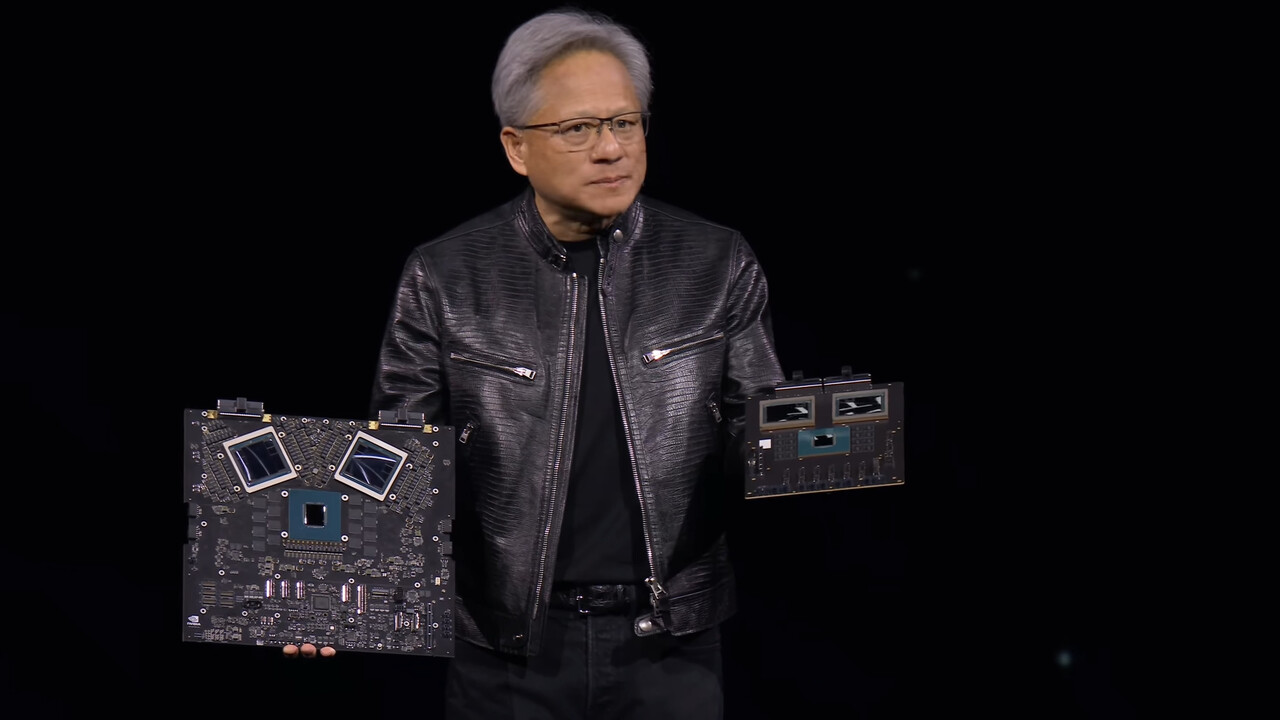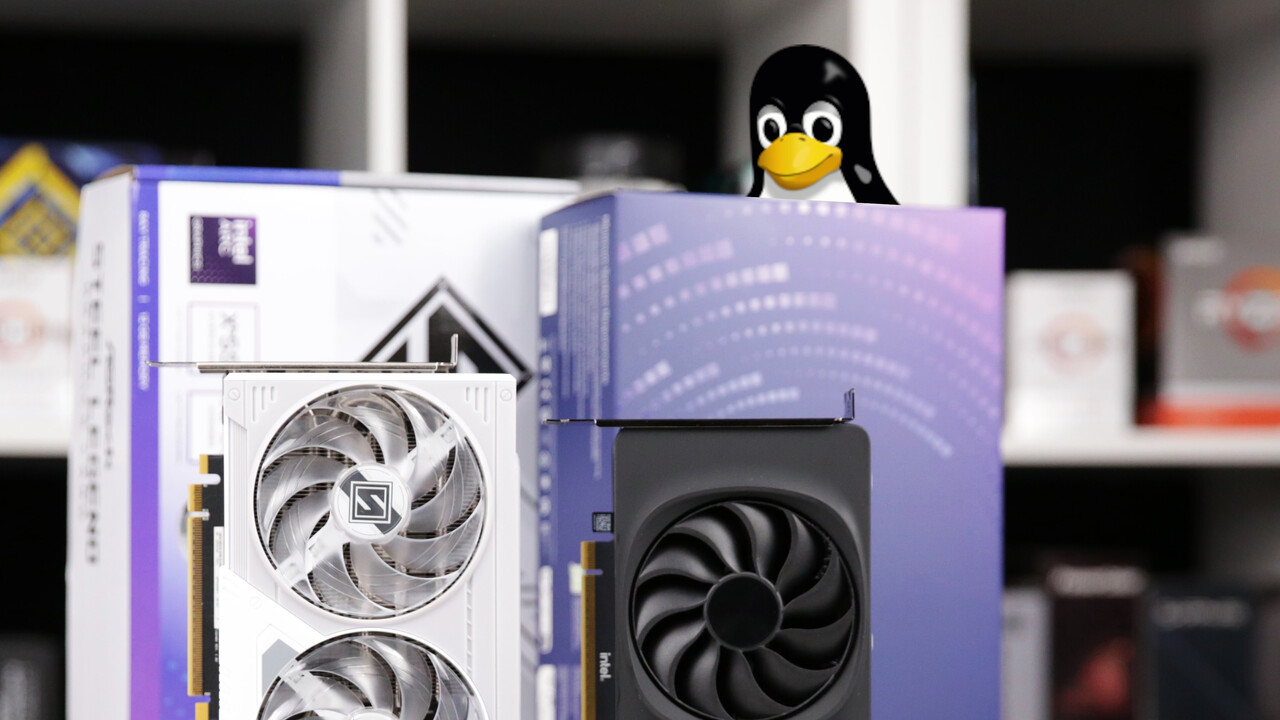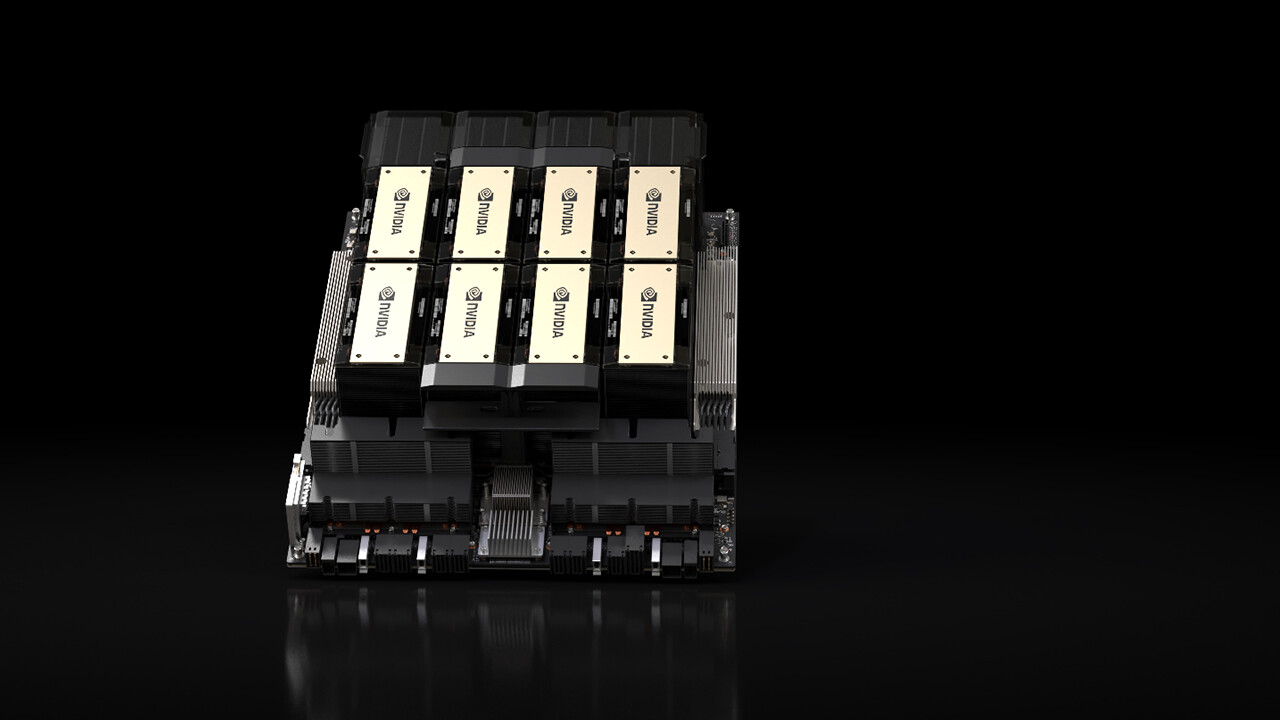Blackwell Ultra: Nvidia GB300 has 288 GB HBM3e and 1.4 kW per GPU 46 comments

Image: Nvidia
Technical data for the upgrade to Blackwell Ultra comes from the Taiwanese supply chain. Nvidia had already announced the mid-cycle refresh of the Blackwell architecture at Computex in June, and now details for the GB300 such as the amount of HBM3e installed (288 GB) or the consumption per GPU (1,400 watts) are revealed .
The manufacturer announced to investors about a year ago that Nvidia would accelerate the pace of introducing new solutions for AI supercomputing. During the Computex keynote in June this year, CEO Jensen Huang was surprisingly open and gave the audience a glimpse of Blackwell’s successors, Blackwell Ultra, Rubin and Rubin Ultra for the next few years.
Blackwell Ultra with 288 GB HBM3e
As a result, the Blackwell Ultra mid-cycle update is planned for next year. Nvidia had already officially announced the “8S HBM3e 12H” feature for this purpose. This means: 8 HBM3e stacks, each with 12 layers, are used. Memory expansion per GPU is expected to increase from the current 192 GB to 288 GB, reports Taiwan’s Economic Daily with reference to the supply chain.
However, the 288 GB figure is not surprising, since Blackwell (without Ultra) currently uses 8 stacks of HBM3e, each with 8 layers, bringing it to 192 GB. 50% more layers with Blackwell Ultra means 50 % more memory and therefore 288 GB.
TDP increases moderately
The Economic Daily report mainly focuses on the GB300, the successor to the GB200 superchip. This is what Nvidia calls the card with two B200 GPUs and a Grace CPU. 36 of these cards make up the GB200 NVL72, a dense, water-cooled rack with 72 Blackwell GPUs, 36 Grace CPUs, 13.5 TB HBM3e, and up to 1,440 PetaFLOPS of performance (FP4 Tensor Core Sparse). Each Superchip card has a configurable TDP of 2,700 watts. This is important when it comes to Blackwell Ultra.
The article lists a TDP of 1,400 watts for the B300 GPU. That sounds like a lot, but it’s not much more than B200. Two Blackwell Ultra GPUs would reach a maximum of 2,800 watts, and it would then be necessary to add the Grace CPU and other components of the card in order to be able to compare the consumption with the previous Superchip GB200. It is predictable that the consumption per card will be higher, but the difference will not be dramatic if we compare it to the increase in performance. FP4 performance would increase by 50% to 2,160 PetaFLOPS with Blackwell Ultra when using sparse acceleration.
LPCAMM for the Grace processor
In addition to the HBM3e of the GPUs, 480 GB of LPDDR5X for the Grace processor are also soldered on each Superchip GB200. The next generation will introduce the modular LPCAMM, intended from the start for laptops, desktops and servers.
Changes to cooling and energy storage
For new AI servers equipped with Blackwell Ultra, the number of universal quick disconnects (UQD) for water cooling is expected to be increased, making the system more modular. In the new racks, space will also be created for battery backup units (BBUs) and supercapacitors to use this energy to cushion outages.
Networking expected to double to 1.6 Tbps
Additionally, Nvidia plans to double the next network speed to 1.6 Tbps. The Economic Daily puts into play an upgrade from the old ConnectX-7 InfiniBand adapter to the ConnectX-8. According to the Computex roadmap from June, 1.6 Tbit/s was only planned for the Rubin platform and its ConnectX-9, expected next year. ConnectX-8 is also already used in current Blackwell solutions and provides 800 Gbps bandwidth.
Topics: Graphics cards Artificial intelligence Nvidia Nvidia Blackwell Source: Economic Daily

An engineer by training, Alexandre shares his knowledge on GPU performance for gaming and creation.


